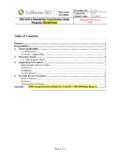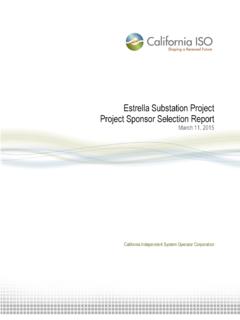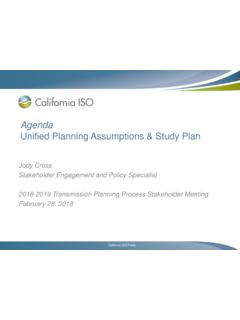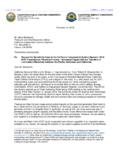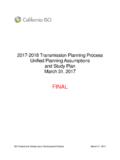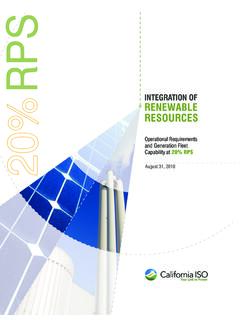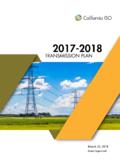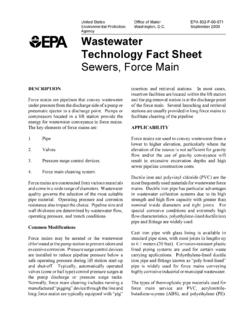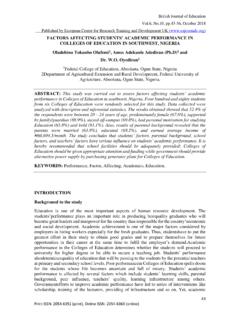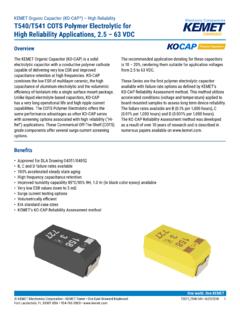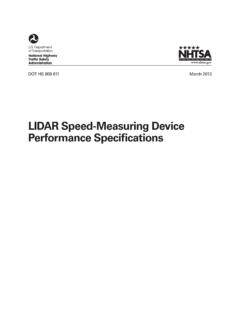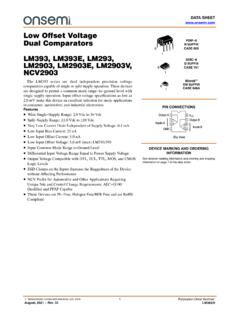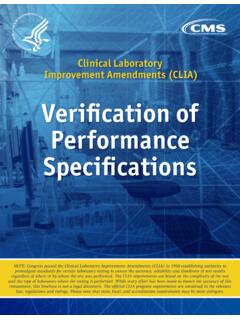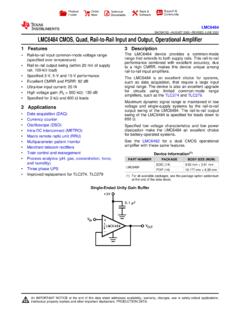Transcription of Page | 1
1 Page | 1. Principal Investigators Clyde Loutan (California ISO). Vahan Gevorgian (NREL). Project Team California ISO: Peter Klauer, Sirajul Chowdhury, Stephen Hall First Solar: Mahesh Morjaria, Vladimir Chadliev, Nick Milam, Christopher Milan Page | 2. List of Acronyms ACE Area Control Error AGC Automatic Generation Control APC active power control BA Balancing Authority CAISO California Independent System Operator FFR fast frequency response NREL National Renewable Energy Laboratory PFR primary frequency response POI point of interconnection PPC power plant controller PV photovoltaic ROCOF rate of change of frequency SCADA Supervisory Control and Data Acquisition Page | 3. Acknowledgements We thank and acknowledge the substantial contributions to this work provided by the staff of First Solar corporate office in Tempe, AZ during planning and implementation stages of this project.
2 The authors thank Dr. Guohui Yuan of the Department of Energy's (DOE's) Solar Energy Technologies Office for his continuous support of this project. Page | 4. Abstract The California Independent System Operator (CAISO), First Solar, and National Renewable Energy Laboratory (NREL), conducted a demonstration project on a large utility-scale photovoltaic (PV) plant in the CAISO's balancing area to test its ability to provide important ancillary services to the grid. With an increasing share of solar and wind generated energy, traditional power generation resources equipped with automatic governor control and automatic voltage regulation controls, specifically fossil thermal, are being displaced. Deployment of utility-scale, grid-friendly PV power plants that incorporate advanced capabilities to support grid stability and reliability is essential for the large-scale integration of PV generation into the electric power grid, among other technical requirements.
3 A typical photovoltaic (PV) power plant consists of multiple power electronic inverters and can contribute to grid stability and reliability through sophisticated grid-friendly controls. It may in this way mitigate the impact of its variability on the grid, and contribute to important system requirements more like traditional generators. In August 2016, testing was conducted on one of the First Solar's 300-megawatt plant, and a large amount of test data was produced and analyzed that demonstrates the capability of PV power plants to provide various types of new grid-friendly controls. This data showed how the development of advanced power controls can leverage PV's value from being simply an intermittent energy resource to providing services that range from spinning reserves, load following, voltage support, ramping, frequency response, variability smoothing and frequency regulation to power quality.
4 Specifically, the tests conducted included various forms of active power controls such as automatic generation control (AGC). and frequency regulation, droop response, and reactive power/voltage/power factor controls. Page | 5. Contents 4. Abstract .. 5. Table of Figures .. 7. 1. Introduction .. 9. 2. PV Plant 17. Figure 10. First Solar operations center in Tempe, AZ. Image from First Solar .. 20. 3. AGC Participation Tests for First Solar's 300 MW PV Power Plant .. 21. Description and rationale for AGC Tests .. 21. AGC Test Results .. 23. 4. Frequency Droop Control Tests .. 31. Rationale and description of frequency droop tests .. 31. Droop test results .. 33. Droop tests during under-frequency event .. 33. Frequency droop tests during over-frequency event .. 39. 5.
5 Reactive Power and Voltage Control Tests .. 41. Rationale and description of reactive power tests .. 41. Results of reactive capability power tests .. 45. Low Generation Reactive Power Production Test .. 50. 6. Additional 52. 7. Conclusions and Future Plans .. 55. General 56. Future plans .. 57. Appendix A: Test Plan .. 60. Objective .. 60. Regulation Up and Regulation 60. A3. Voltage Regulation 61. Active Power Control capabilities .. 63. Frequency Response .. 64. Page | 6. Table of Figures Figure 1. CAISO's Expected Renewable Build-out to meet 50% RPS .. 10. Figure 2. CAISO's expected build-out of Rooftop Solar PV .. 10. Figure 3. CAISO duck chart (source: CAISO) .. 11. Figure 4. CAISO generation breakdown for April 24, 2016 (source: CAISO) .. 12. Figure 5. CAISO average daily regulation procurement costs during Jan-June, 2016 (source: CAISO).
6 13. Figure 6. Aerial photo of 300 MW PV power plant (source; First Solar) .. 17. Figure 7. Electrical diagram of 300 MW PV plant (source: First Solar) .. 17. Figure 8. General diagram of First Solar PV power plant controls and interfaces, Image from First Solar 19. Figure 9. Diagram of a First Solar PV power plant control system architecture. Image from First Solar .. 19. Figure 10. First Solar operations center in Tempe, AZ. Image from First Solar .. 20. Figure 11. Concept of AGC following by PV power plant ( with 40% headroom) .. 21. Figure 12. Simplified diagram of CAISO AGC system .. 22. Figure 13. Historic CAISO AGC signal used in testing .. 24. Figure 14. Morning AGC test (9:47am 10:10am) .. 25. Figure 15. Mid-day AGC test (12:40pm 1pm) .. 26. Figure 16. Mid-day AGC test zoomed-in.
7 26. Figure AGC test (2:54pm 3:16pm) .. 27. Figure 18. Afternoon AGC test zoom in .. 27. Figure 19. AGC performance for three time periods .. 28. Figure 20: AGC control error for all three tests .. 28. Figure 21. Distribution of AGC control 29. Figure 22. Frequency droop characteristic .. 32. Figure 23. Under-frequency event .. 32. Figure 24. Over-frequency event .. 32. Figure 25. Example of plant response to under-frequency event (3% droop test during sunrise) .. 33. Figure 26. Measured droop characteristic for under-frequency event (3% droop test during sunrise) .. 34. Figure 27. Measured droop characteristics for under-frequency event (a - 5% droop test, b 3% droop test during mid-day).. 34. Figure 28. Measured droop characteristics for under-frequency event (5% droop test during sunset).
8 35. Figure 29. Results (a) and control error (b) during sunrise 3% droop test for under-frequency event .. 36. Figure 30. Results (a) and control error (b) during second sunrise 3% droop test for under-frequency event .. 36. Figure 31. Results (a) and control error (b) during mid-day 3% droop test for under-frequency event .. 37. Figure 32. Results (a) and control error (b) during mid-day 5% droop test for under-frequency event .. 37. Figure 33. Results (a) and control error (b) during sunset 5% droop test for under-frequency event .. 37. Figure 34. Consolidated under-frequency droop test 38. Figure 35. Example of plant response to over-frequency event (5% droop test during sunrise).. 39. Figure 36. Measured droop characteristics for over-frequency event (a - 5% droop test, b 3% droop test during midday).
9 39. Figure 37. Measured droop characteristics for over-frequency event (5% droop test during sunset) .. 40. Page | 7. Figure 38. Concept of non-symmetric droop characteristic for PV plants .. 40. Figure 39. Comparison of reactive power capability for synchronous generator and PV inverter of same MVA and MW 42. Figure 40. Proposed reactive power capability for asynchronous resources (source: CAISO) .. 42. Figure 41. CAISO proposed reactive capability applied to the 300 MW PV plant under testing .. 43. Figure 42. Plant reactive power capability at different voltage levels at full MW output .. 44. Figure 43. Measured reactive power capability at 46. Figure 44. Measured reactive power capability and voltages at POI .. 47. Figure 45. Results of voltage limit control test.
10 47. Figure 46. Voltage limit control test and reactive pwoer 48. Figure 47. Lagging and leading power factor control 49. Figure 48. Reactive power control test .. 50. Figure 49. Reactive power production test at no active power (P 0 MW) .. 51. Figure 50: Plant output during Aug 23, 2016 tests .. 52. Figure 51: Active power curtailment test .. 53. Figure 52. Results of frequency validation test .. 54. Figure 53. Grid-friendly PV power plant .. 57. Page | 8. 1. Introduction As of the end of 2015, the had 25 gigawatts (GW) of installed photovoltaic capacity with an additional GW of concentrated solar power [1]. In the 12 months ending June 2016, utility-scale solar power generated terawatt-hours (TWh), of the total electricity supply. During the same time period, total solar generation, including estimated distributed solar photovoltaic generation, was TWh, % of the total electricity load [2].
